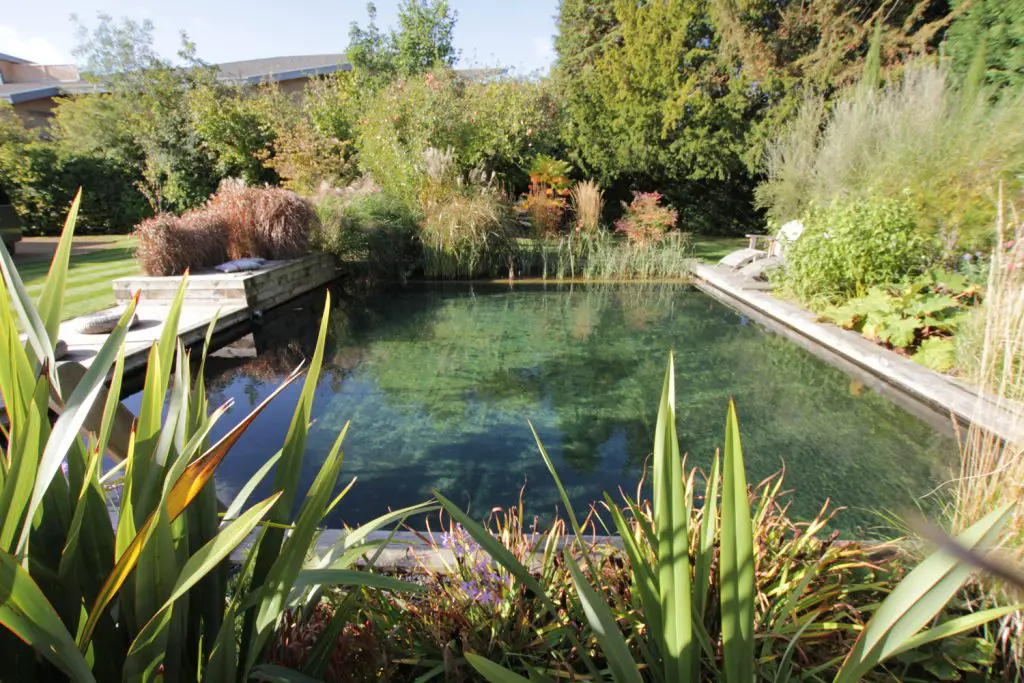Are you dreaming of having your own natural pond for swimming in your backyard? Building a natural pond can be a rewarding and enjoyable project that will provide you with a beautiful and refreshing oasis to enjoy during the hot summer months. In this article, we will guide you through the steps to create a stunning natural pond that is perfect for swimming.
Step 1: Planning and Design
Before you start digging, it’s essential to plan and design your natural swimming pond carefully. Consider the size and shape of the pond, the depth of the swimming area, and the overall layout of the surrounding landscape. Make sure to take into account factors such as sunlight exposure, existing trees and plants, and any potential sources of contamination.
Creating a detailed plan will help you visualize the final result and ensure that your natural pond is both aesthetically pleasing and functional. You may also want to consult with a professional pond designer or landscaper to get expert advice on the best design for your space.
Step 2: Choosing a Location
When selecting a location for your natural swimming pond, it’s essential to choose a spot that receives plenty of sunlight and is away from overhanging trees or structures that could drop debris into the water. The area should also have good drainage to prevent waterlogging and flooding.
Consider the natural topography of your yard and look for a level area that can accommodate the size of the pond you have in mind. Avoid building your pond in low-lying areas that could collect runoff water or pollutants.
Step 3: Excavation and Shaping
Once you have planned and marked out the location of your natural swimming pond, it’s time to start excavating the area. Use a shovel or a mechanical excavator to dig out the shape of the pond, keeping in mind the desired depth for the swimming area.
As you dig, create shelves or ledges around the edges of the pond to provide a gradual slope from the land into the water. This will make it easier to access the water and create a more natural-looking transition between the land and the pond.
Step 4: Installing a Liner
To prevent water from seeping into the surrounding soil, you will need to install a liner in your natural swimming pond. There are several options for pond liners, including rubber, PVC, and EPDM. Choose a high-quality liner that is durable and resistant to punctures.
Carefully place the liner in the excavated pond, making sure to smooth out any wrinkles or folds. Secure the edges of the liner with rocks or soil to hold it in place and create a watertight seal.

Credit: www.youtube.com
Step 5: Adding Filtration and Circulation
For a clean and healthy swimming environment, it’s essential to incorporate filtration and circulation systems into your natural pond. Consider installing a biological filter, a skimmer, and a pump to keep the water clear and free of debris.
Water circulation is also important for maintaining water quality and preventing stagnation. You can use a fountain, waterfall, or aerator to keep the water moving and oxygenated, creating a more natural and inviting swimming experience.

Credit: www.wikihow.com
Step 6: Landscaping and Planting
To enhance the beauty and ecological balance of your natural swimming pond, consider adding aquatic plants around the edges and in the water. Plants such as water lilies, cattails, and water hyacinths can help filter the water, provide shade and habitat for wildlife, and create a more naturalistic look.
When landscaping around the pond, choose native plants that are well-suited to your climate and soil conditions. Incorporate rocks, boulders, and driftwood to create a naturalistic shoreline and habitat for aquatic creatures.
Step 7: Filling and Balancing the Water
Once you have completed the construction of your natural swimming pond, it’s time to fill it with water. Use a garden hose or a water truck to slowly fill the pond, taking care not to disturb the liner or create erosion around the edges.
Test the water quality regularly and adjust the pH, alkalinity, and hardness levels as needed to create a healthy and balanced ecosystem for swimming. You may also need to add beneficial bacteria or other water treatments to maintain water clarity and prevent algae growth.
Step 8: Enjoying Your Natural Swimming Pond
With proper planning, design, and construction, your natural swimming pond will provide you with years of enjoyment and relaxation. Invite friends and family to swim, sunbathe, and relax by the water, or simply enjoy the sights and sounds of nature in your own backyard oasis.
Remember to maintain your pond regularly by removing debris, trimming plants, and checking the water quality to ensure a clean and safe swimming environment. With a little care and attention, your natural pond will continue to thrive and provide a beautiful and refreshing escape for years to come.
Building a natural pond for swimming is a rewarding and fulfilling project that will enhance your backyard and provide you with a unique and sustainable swimming experience. By following these steps and tips, you can create a beautiful and eco-friendly oasis that will delight you and your loved ones for years to come.





